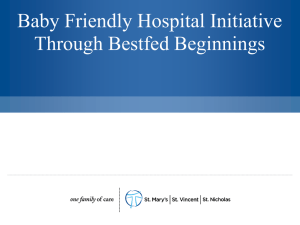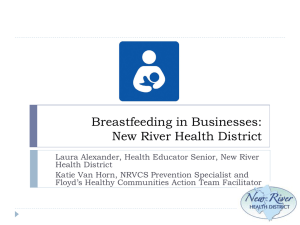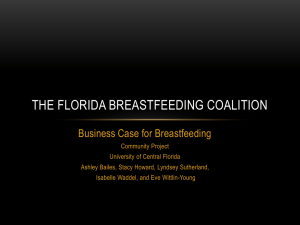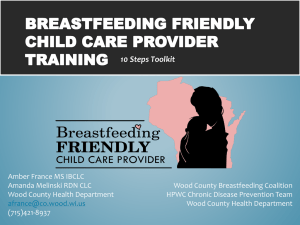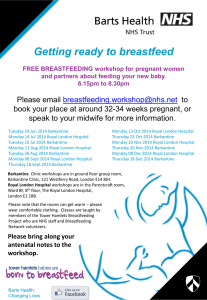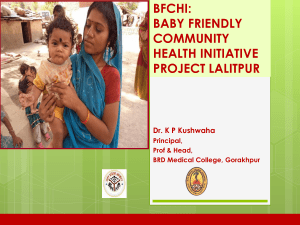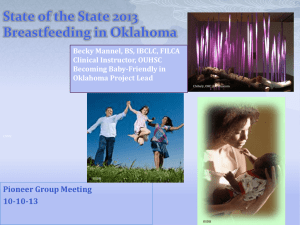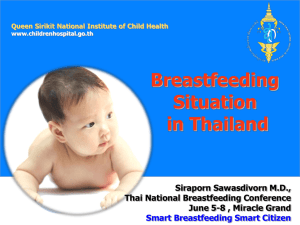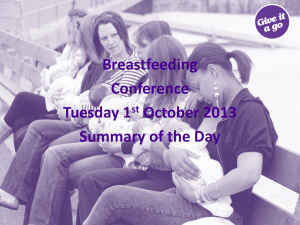Mosadi o tshwara thipa ka bohaleng.
advertisement
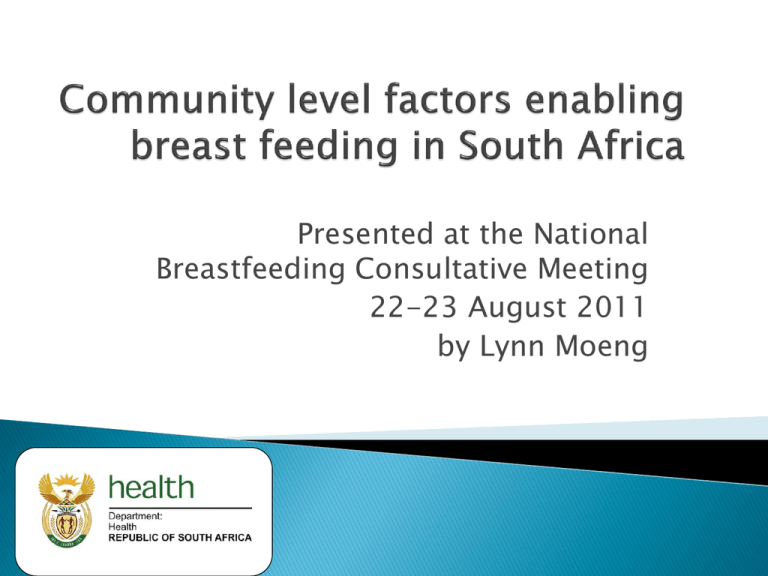
Presented at the National Breastfeeding Consultative Meeting 22-23 August 2011 by Lynn Moeng Contextual factors Individual Level- Personal factors Household Level- family influences and perceptions Community Level- attitudes and support Cultural practices and taboos Knowledge related aspects Generally, women and caregivers believe that breastfeeding is the best way to feed babies and many do choose breastfeeding as the first feeding option The questions is why are breastfeeding practices so poor? Not enough milk - Preventable Breast problems - Preventable Baby or Mother too ill - Can be managed Baby crying often Child refuses to breastfeed – many preventable reasons for this. Fear of HIV transmitting through breastfeeding Young women believe it is difficult and painful Going back to work/school - Mothers believe that children should be introduced to other milks and foods before 6 months, in preparation for separation. Reason for stopping breastfeeding Chose to formula feed Mother working Child refused breast Nipple/breast problem Mother ill/weak 0 5 10 15 Percentages 20 25 30 Where can one go for support on breastfeeding Friend Grand mother Mother CHW Health worker 0 10 20 30 40 Percentages 50 60 70 Family history and traditions- how other children were fed. Storing expressed milk at home is a taboo in our culture. Men not given an opportunity to make decisions on infant feeding. The best they can contribute is purchasing formula. Influence from grannies The pressure for young girls who have just delivered babies to go back to school immediately. – the effect of this on the health and survival of these children needs to be investigated. Preparation for a newborn often includes formula, bottle,teat and self medication eg. Druppels, gripewater and many others. Link between community structures and the health facility is weak. Knowledge and skills of community health workers. Availability and sustainability of support groups Acceptability of mixed feeding- regarded as the norm. There are conflicts between cultural norms and information provided by health workers. Limited utilization of NGO’s to support infant feeding. Where can one go for information on breastfeeding Support group Friend Grand mother Mother TV Radio CHW Health worker 0 10 20 30 40 50 Percentages 60 70 80 90 100 Where should women breastfeed- in some environments, restrooms are designated as breastfeeding places- breastfeeding is feeding. Public places are not breastfeeding friendly Households are not breastfeeding friendly Strengthen referral systems from PHC to existing community structures. Follow-up support just after discharge ( within three days). How are the postnatal visits used to support breastfeeding. Breastfeeding management challenges ◦ Supply and demand ◦ Positioning and attachment ◦ Assisting mothers with problems such as flat nipples Growth spurts ( critical points when frequency of breastfeeding should be increased. Rates of HIV transmission not well understood Feasibility of exclusive breastfeeding for six months Effects of the use of self medication on breastfeeding including drupples that pored in bath water. Tested strategies that can improve breastfeeding practices Partner involvement Promoting the culture of cup VS bottle feeding Assist mothers to position Ensuring them that is important to breastfeed twins. Supporting a mother to 80% 70% 70% Percentage 60% 50% Exclusively breastfeeding 5 month old infants 40% 30% 20% 6% 10% 0% Project Area Control Adapted from: Haider R, Kabir I, Huttly S, Ashworth A. Training peer counselors to promote and support exclusive breastfeeding in Bangladesh. J Hum Lact, 2002;18(1):7-12. Slide 4.10.5 Step 2: Breastfeeding counselling increases exclusive breastfeeding Age: 3 months 4 months Exclusive breastfeeding (%) 100 80 2 weeks after diarrhoea treatment 75 72 56.8 60 58.7 Control Counselled 40 20 12.7 6 0 Brazil '98 Sri Lanka '99 Bangladesh '96 (Albernaz) (Jayathilaka) (Haider) All differences between intervention and control groups are significant at p<0.001. From: CAH/WHO based on studies by Albernaz, Jayathilaka and Haider. Slide 4.2.5 Median duration of exclusive breastfeeding = 159 days % exclusively breastfeeding 100 80 81.90% 72.5% 60 66.7% 45% 5 mths 6 mths 40 20 0 6 weeks 3 mths Age Coovadia et al., Lancet 2007 Exclusive reastfeeding (%) 90% 80% 80% 70% 60% Six-visit group Three-visit group Control group 67% 62% 50% 50% 40% 24% 30% 20% 12% 10% 0% 2 weeks 3 months Infant's age From: Morrow A, Guerrereo ML, Shultis J, et al. Efficacy of home-based peer counselling to promote exclusive breastfeeding: a randomised controlled trial. Lancet, 1999, 353:1226-31 Slide 4.10.6 Capacity building of CHW Improve prenatal and post natal education Involvement of all role players in promoting Breastfeeding Investment in marketing Social mobilisation of community Creating conducive environments for mothers to breastfeed Thank you
